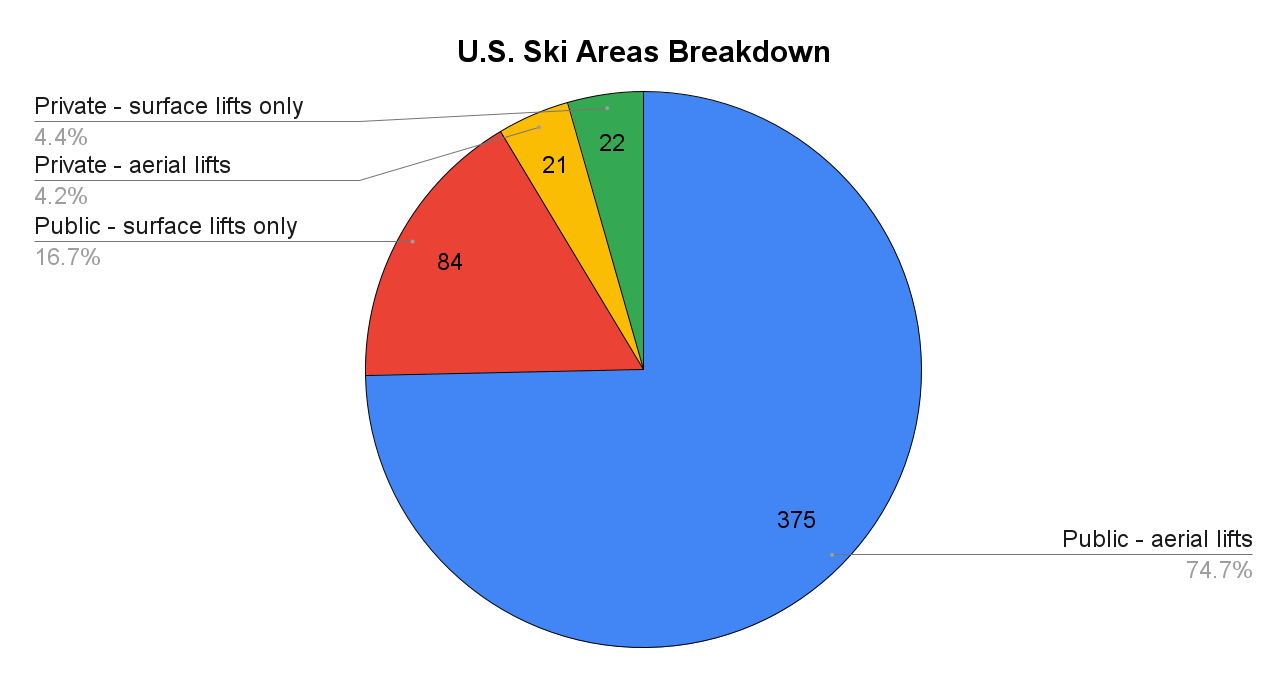How Dominant Are Epic and Ikon, Really?
Kind of a lot, and kind of not
Recent Storm posts quantifying the size of ski states by different metrics and documenting the growth of America’s skiable acreage over time got me thinking about another set of stats: how much U.S. skiable acreage is controlled by the biggest ski companies, and how much is available to skiers on each major national ski pass?
Let’s start by simplifying our universe. We had, as of my most recent count, 502 active U.S. ski areas this winter, which totaled 240,485 skiable acres. That’s a lot, but 43 of those – 8.5 percent – are private. That leaves us with 459 public U.S. ski areas, totalling 230,939 acres. But 84 of those (18 percent) run only surface lifts and add up to 3,238 acres. Subtracting privates and surface-lift-only bumps, we get to the number that most skiers actually care about: 375 of America’s 502 active ski areas (roughly 75 percent) operate at least one chairlift and are open to the public. Here’s how that all breaks down:
Let’s focus on those 375 for today, as these are the ski areas that most of us will experience most of the time. Of those 375, multi-mountain operators manage 139. You can view the full breakdown here.
These are the numbers I typically lean on to demonstrate that the conglomerates-are-eating-skiing narratives are overblown. If 62 percent of public ski areas with aerial lifts are still independently owned and operated, then plenty of consumer choice remains, right?




